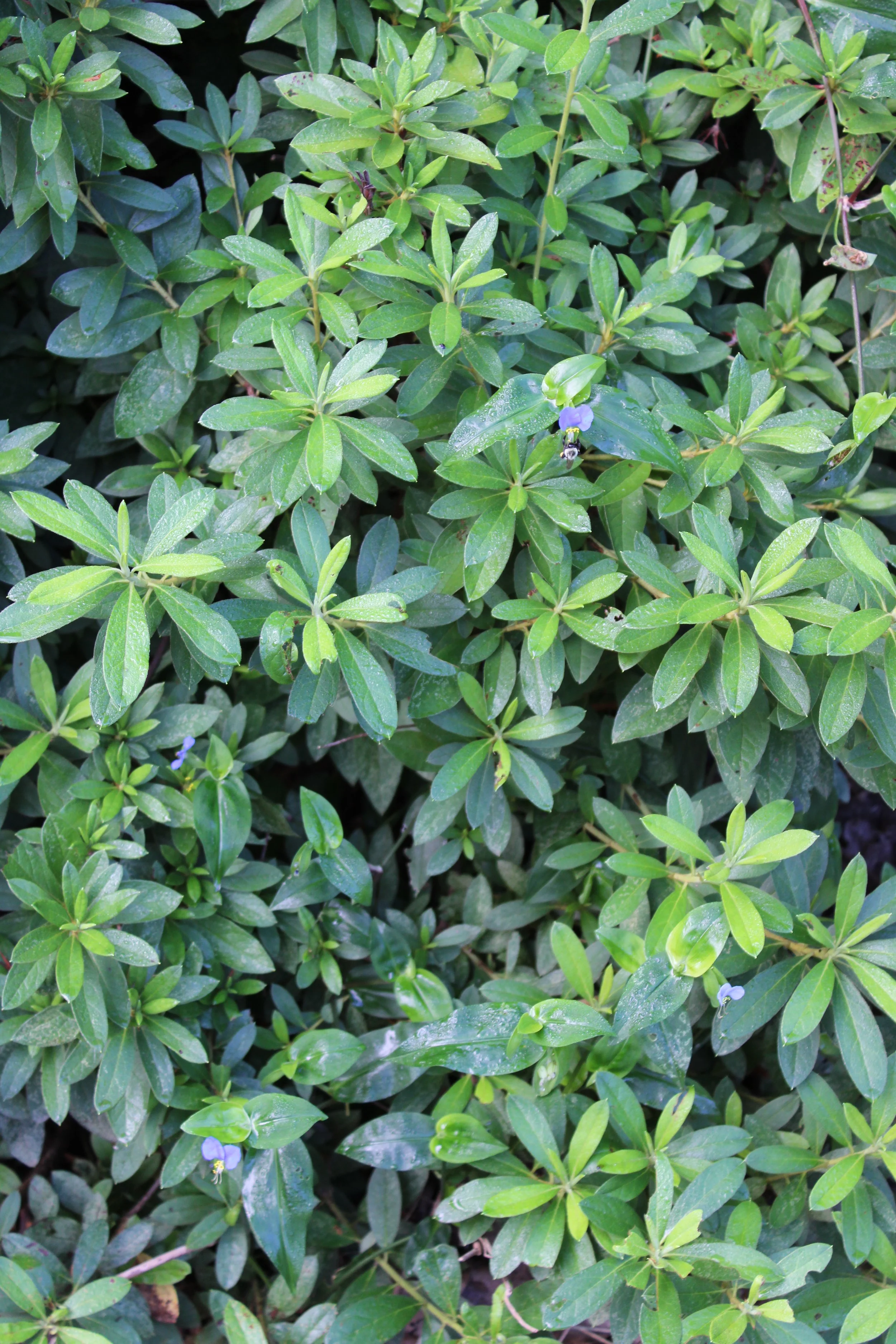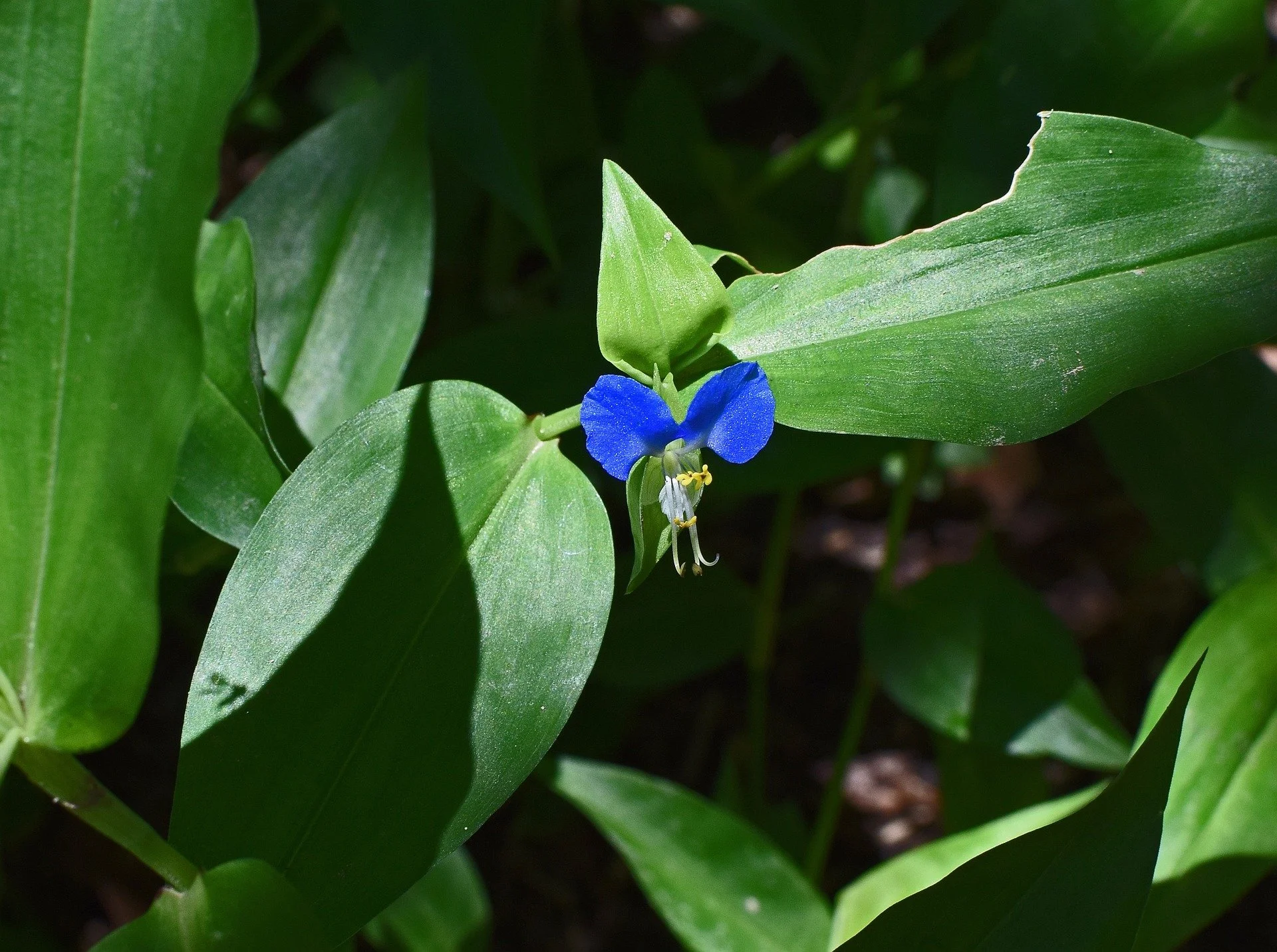There is an old-fashioned saying, “Pretty is as pretty does.” This is a cryptic way for mothers to tell their headstrong daughters that nice behavior makes them more attractive. The corollary is that a pretty girl with a nasty disposition is not attractive. Asiatic dayflower, Commelina communis, has a beautiful bloom but if an unsuspecting gardener allows just one to remain, plants soon appear everywhere. I repeat, everywhere.
Asiatic dayflower has two blue petals, one smaller white or light blue petal, and yellow stamens. Each flower lasts only one day. The stems are weak and floppy, but the flowers rise above them, to heights of around two feet. Plants are perennial in zones 5-8. They prefer moist soil and partial shade, but will grow in many other situations. It typically crops up along the edges of woodlands. In my garden, it likes to appear stealthily under the edges of tall, Southern Indica azaleas but the striking blue flowers reveal its hiding place.
This non-native wildflower is listed as invasive in several states. Plants are resistant to herbicides. Removal is best done by hand pulling after a rain, when soil is damp. In dry soil, the brittle stems break off and plants return quickly. Also, don’t pull them and toss them aside to die. The stems will throw roots from every leaf node and soon there will be a community, laughing (I assume) at efforts to eradicate. The flowers produce numerous seeds with a high germination rate.
This sneaky fella has concealed himself in the foliage of an Azalea.



